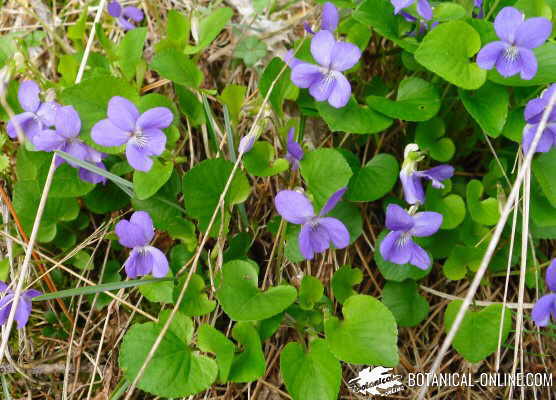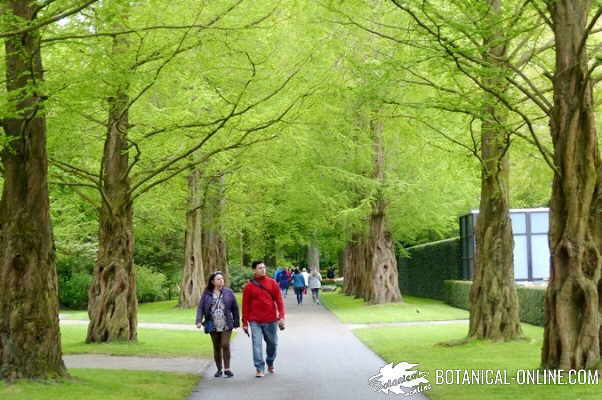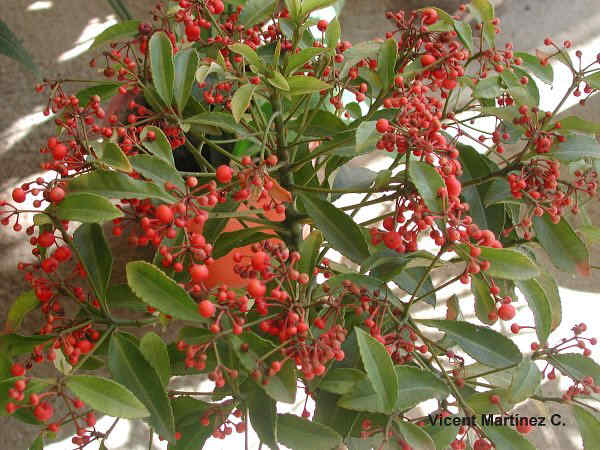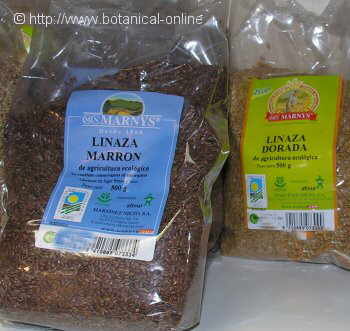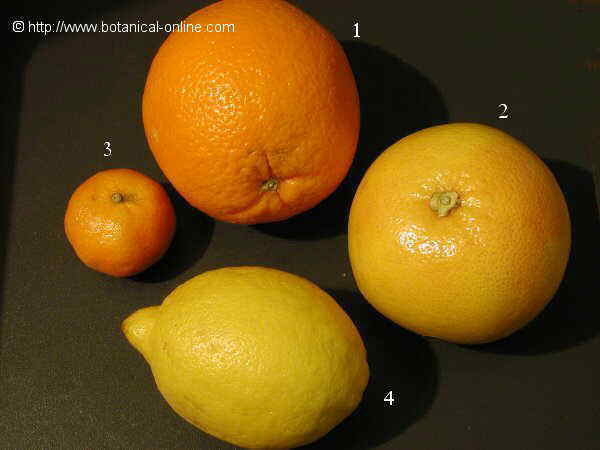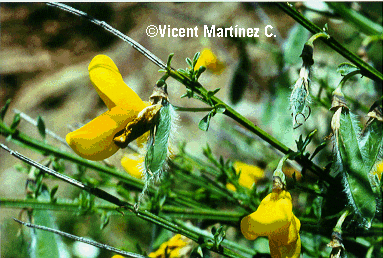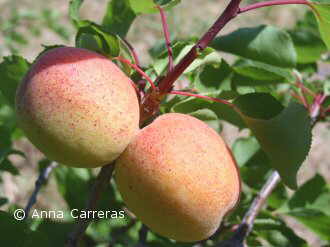Contents
Planting a climbing plant
TECHNIQUES FOR PLANTING CLIMBING PLANTS
How to plant a climber?
At the time of planting a climber, we must have in mind all previous preparation and techniques of planting and the appropriate fixing support that will allow the climber can grow properly.
Preparation of the soil for a climber
The first thing we have to take into account is that the ground where the climber is to be planted must be perfectly prepared.
The first thing that is required is to rid the soil of weeds, which can be done manually or by herbicides.
Climbing plants, in general, need a soil rich in organic matter, so we will dig a good hole approximately twice the size of the roots so that they have enough loose soil to spread easily. We will add garden soil or compost to the soil extracted from the hole .
In case of very poor ground, you can add a little fertilizer. Another very good technique is fertilizer with nettle slurry.
Planting distance for climbers
Once the ground is prepared, the climber must be planted taking into account the planting distance.
- In the case of already existing supports, such as fences or walls, it is very important to leave a distance of about 45 to 50 cm from the stand where they are going to climb.
The reason for maintaining this considerable distance is due to the fact that walls or fences exert what is known as “rain shadow”. That is, the immediate area to these supports has a level of rainwater below normal, which would require too constant watering in case of planting too much samples. The planting distance allows to receive enough rainwater so that they do not need practically watering once they have been established.
- In case of using pillars, trellises or mobile tripods the distance of planting has to be about 25 cm.
We also have to take into account the distance of planting of a climber when it is planted next to another climber that will serve it as support to climb. In this case, the distance will depend on the type of roots that the climber possesses.
In case of having superficial roots, it should be considered as if it was a wall, whose roots exert the same effect of “rain shadow” reason why it should be planted at the same distance, that is to say about 45 cm from where the roots are and guide it to it by means of an additional support, such as a cane.
If the host climber has deep roots, it can be planted near its stem.
How to plant a climber next to a fence or wall
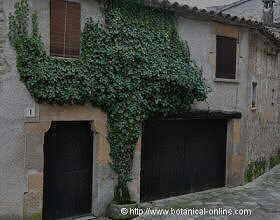
Ivy planted on the wall of a house
Many of the climbers are planted next to walls or fences, so it is important to know the proper technique of how to plant them. At the time of planting a climber next to a wall the following steps must be taken into account:
- Preparation of the ground: Soil preparation can be done at the time of planting the climber or a few days before. Follow the steps seen above.
- Prepare the support of the fence or wall to be fixed.
- Dig the hole and place the fixing rods: In the previously worked soil we will open a hole located 45 cm from the fence or wall. Inside the hole we will introduce 4 or 5 bamboo canes that, starting from the ground, are directed towards the wall forming an angle of about 45º with respect to the ground and openly, fanshaped fixed on the wall.
- Take the climber out of the pot and place it in the hole: Climbers are usually sold in pots, so you have to remove them from the pot and put them in the hole. Place the climber in the hole so that the plant is tilted about 45 º towards the wall and the bottom of the stem is at ground level. (An exception to this rule is clematis, whose root ball should be placed about 10 cm below the ground)
- Fix the climber and the rods to the ground: Once well oriented, cover the hole with the soil removed and tighten it a little, so that the roots are well fixed. If necessary, more soil will be added to secure the plant and canes.
- Untie the main stems of the original cane and guide them on the reeds inclined towards the wall: All the stems of the climber were held in a single vertical cane in the original pot.
Very carefully, we will unleash the 4 or 5 main stems one by one, separating them with care from the original support. (It is very important to select as the main offspring those that are the strongest, most healthy and harmonic to later eliminate the weak, diseased or irregular growth).
- Pick the main stems, guide them on the canes and tie them with plastic or metal ties, such as wires or raffia of prolipolene. The stems must be fastened by making loose knots, tying them just above the knot of the cane, so that the binding can be maintained and does not slide down.
- Cut the rest of the stems: Using a well sharpened and disinfected pruning knife, we will cut the rest of the stems just where they are born from the central stem. In this way, we will get the main shoots to have more energy to grow towards the wall.
- Working in the topsoil: Once the new climbing plant is planted and guided towards the wall, the soil should be prepared properly to allow irrigation, keep adequate moisture and prevent the development of grasses.
To do this, the compacted soil adjacent to the plant has to be loosened. Subsequently, we will establish a mound of land around the plant to retain the irrigation water.
- Water well: Then we must water with profusion so that it fills well the inner zone of the mound. Irrigation should be common during the first few months until the plant has adapted well. In the hot months it should be done once or twice a week, so that the soil always maintains adequate moisture.
- Mulching the root zone: The area of influence of the roots will be covered with a layer of about 6 cm. Mulching allows to maintain moisture and prevent the development of weeds.
- Guide the stems through the wall or fence: When the stems reach the wall or fence, they should be guided by the wires of the wall. For this the central stems will be oriented by the vertical wires, whereas the lateral ones will be directed horizontally.
How to plant a climber in a pot or container?
Climbers can be planted in large pots or containers. This allows a better control of their expansion in the event that they are planted outdoors. It is also an appropriate resource for colder areas because it allows to store them indoors in unfavorable periods.
- Field preparation: Climbers planted in pots require pots or deep containers. They can be made of plastic, although terracotta ones are more convenient.
Once the pot has been chosen, it should be filled with a suitable mixture to retain moisture, but at the same time, to get a good drainage. The best soil is the result of the combination of 2 parts of peat, 1 part of coarse sand and 1 part thinner with some fertilizer of slow absorption. All this well removed.
- Placement and fixation of the support: Once we have the floor ready, we will place the support in the pot. We can use bamboo canes, wicker branches or plastic tutors.
To do this, we will place 3 tutors separated from each other, so that each of the ends touch the bottom of the pot and lean on the sides. We will add a few fragments of a broken pot in the bottom of the container that will facilitate the drainage and will help separate tutors.
Later, we will pour part of the separated soil to cover the bottom and help to hold the tutors. We will separate the climbing plant from the pot and the original tutor and place it in the new pot so that it is at ground level.
- Fill the pot with the prepared soil compacting it with your hands, so that some space remains empty beween he soil and the edge of the pot.
- We will group the tutors at the top, tying all three at the same top point to provide them a triangular shape. Later we will guide the 3 or 4 main stems, tying them on the tutors.
Circular or other more capricious shapes may also be realized by interlacing wicker branches that have a higher elasticity.
You can even opt for a pot trellis that rests on the bottom and next to one side of the pot. In this way, introducing the soil and compacting it next to the plant will permit to hold the trellis against one side of the pot.
Pot trellises are a much more elegant form of cultivation than the use of bamboo, wicker or plastic canes. However, they have a higher weight and force to support the pot against a wall or a fence to have sufficient stability.
![]() More information on climbing plants.
More information on climbing plants.

